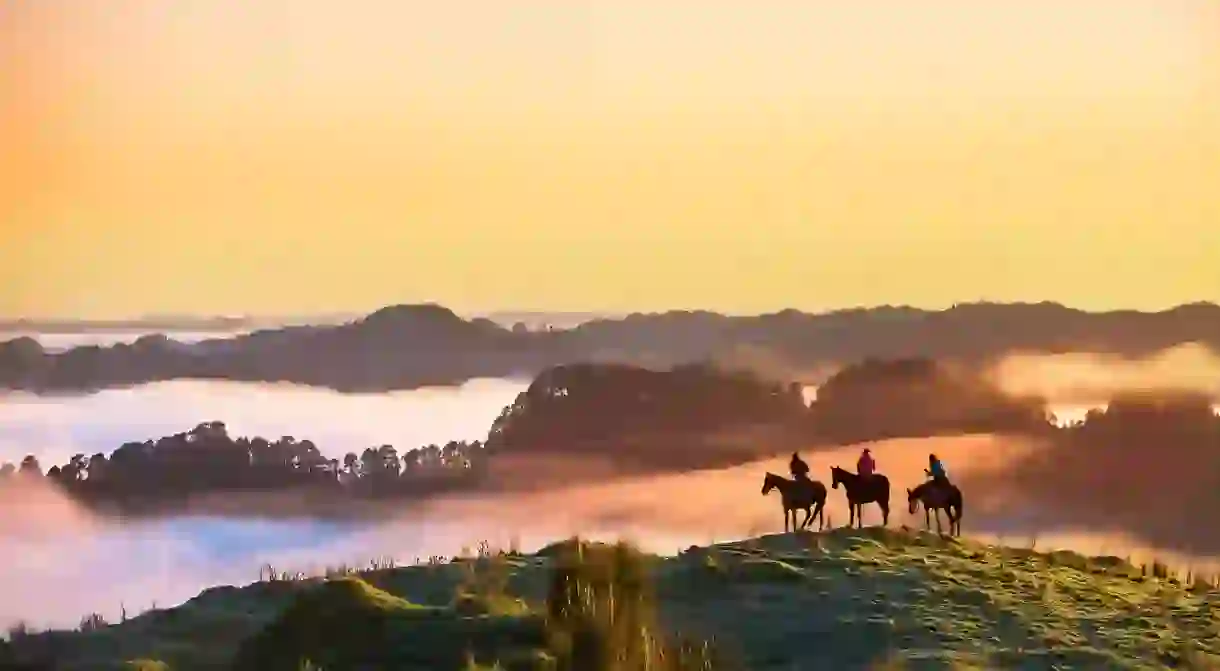Conservation on a Cattle Farm: How Blue Duck Station Is Fighting To Save New Zealand’s Whio

Separated from any other major landmass, with the ocean providing a somewhat impenetrable barrier, many species native to New Zealand have evolved differently to their counterparts elsewhere around the world. It’s no wonder conservationists are passionately fighting a race against time to protect the many species that now find themselves on the brink of extinction.
New Zealand’s position at the bottom of the globe, far from any other country, means it is uniquely placed in the world of biodiversity. The only native species of land mammals to its shores are bats; everything else was introduced by the Māori settlers or later Europeans. There are, however, a vast number of native fish, insects, lizards, frogs and perhaps most recognisably – birds. The kiwi will be top of the list of animals people associate with New Zealand; however, another species endemic to the country is now classed as nationally vulnerable and faces extinction: the whio, or blue duck.

With numbers under 3,000, its dwindling population was once prevalent throughout the entire country, but now can only be found in certain pockets of the North and South Islands. Whio (pronounced fee-oh) are a taonga, or treasured species, to the Māori, which means they are of great cultural, spiritual and historic significance. They also act as barometers for how healthy the environments in which they live are – the more breeding pairs found in an area, the better the quality of the river running through it. Sadly, every challenge faced by the whio is due to human interference in New Zealand. Habitat loss, predation by newly introduced mammals and disturbance to their environment all contribute to their decline. So, it is unusual that help should come from none other than a working cattle farm in the hills of Whakahoro, in the Ruapehu District of the North Island.

Blue Duck Station is a 7,200-acre (2,915ha) farm, located on the banks of the Whanganui and Retaruke Rivers. Framed by dramatic landscape, and isolated from the outside world (no wifi or mobile phone signal to be found) – being any more off the grid is practically impossible. The Station is home to one of the highest concentrations of whio in the country and, through exhaustive conservation efforts, is trying to encourage even more growth in the population of its namesake.

Dan Steele, owner of Blue Duck Station, says, “Looking after the blue duck is very important as it is an indicator of the health of the environment. It requires pristine fresh water streams through healthy rainforests and a predator-free environment to thrive. So, if you are looking after the blue ducks and they are doing well, then your whole environment is doing well. So, although we call ourselves Blue Duck Station, everything in mother nature is important to us from water quality to the overall health of the rainforest.”

The station also offers a range of accommodation options, and with the help of guests staying on the farm their conservation efforts can continue. “We use tourism to advocate for Mother Nature, and we take volunteers from New Zealand and international travellers to help with our conservation efforts. We use their labour to maintain our trap lines and bait stations. They also help with tourism and farming, which allows us more time to improve the habitat for our biodiversity,” Steele says.

It may be in the middle of nowhere, but a day spent at Blue Duck Station is always packed full of activities. A two- to three-hour walk takes visitors to the Kaiwhakauka Waterfall – a favourite hangout for whio, and walkers can rest at the top and bottom of the falls. A shorter walk from the Station’s cafe leads down to the banks of the river on the border of the surrounding Whanganui National Park, the water here is much warmer and more suited to swimming for those wishing to brave the whio’s natural habitat.

Horse riding on the Station has visitors trekking to one of the highest viewpoints overlooking the dramatic landscape, while clay pigeon shooting and a bush safari are options for those feeling more adventurous.

A series of 450 traps are located on the Station, aiming to catch any enemies of the whio such as stoats, weasels, rats and mice, among others. Other efforts by the Station include regenerating bush for the whio to live in, as well as improving the water quality of the surrounding rivers.
During their travels throughout the country, visitors to New Zealand can also assist the Department of Conservation by reporting any whio sightings to the area’s relevant office, including the date, location and number of birds seen. Through these combined efforts, the hope is that the whio will be around for many more years to come and that their population will continue to strengthen for future generations.













